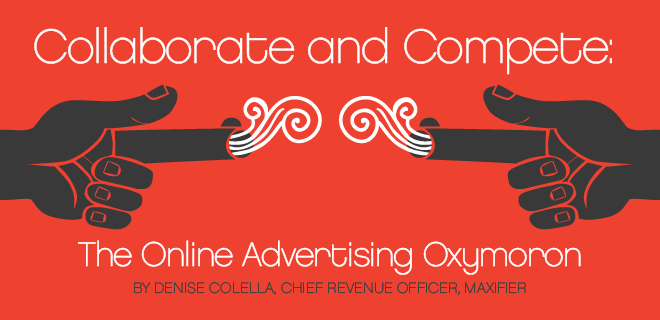
The online advertising industry continues to experience significant changes as we see businesses trying to take advantage of the opportunities offered by a market now worth more than £1 billion in online display alone. One emerging trend seems to be the willingness of companies to collaborate in an attempt to become more competitive against market leaders. A recent example of this is the announcement of Microsoft, AOL and Yahoo! joining forces to sell online advertising space in an attempt to offer a genuine competitive alternative to Google.
Previously, industry rivals rarely considered this type of partnership, as stimulus for collaboration had not been significant – until now. Back in 2007 a number of leading publishers – including EMAP, The Financial Times and The Guardian – had been in talks about creating a premium publisher closed network with Revenue Science (now AudienceScience), but this never materialised. Other past attempts at alliances between competing publisher firms have also failed to come to fruition – the attempt by 5to1 and News Corp. being another example.
However, a recent survey conducted by the Association of Online Publishers (AOP) revealed that this is starting to change. With a long-term aim to compete against large digital platforms, 72% of publishing firms polled say they will look to partner with competitors over the course of this year, putting aside their differences to combat reduced advertising budgets in today’s environment.
Collaboration Revolution
Recent practice has seen publishers taking a ‘dash for cash’ approach to their inventory by attempting to use technologies and techniques to sell 100% of what they have. However, this is now changing as this strategy has led to buyers capitalising on this access to low-cost inventory to negotiate down prices when buying premium inventory direct with a publisher. Publishers are now looking to redress this balance by taking greater control of their inventory and adopting solutions that can help further their aims.
Germany’s AdAudience and the impending launch of not one but two publisher exchanges in France – Audience Square and AdMediaPremium – are more examples where collaboration is taking place to safeguard the interests of publishers and deliver higher CPMs.
As publishers come to rely more heavily on new ways of distributing content via channels such as the Apple platform, the sheer magnitude and scale of these businesses leaves individual publisher negotiations in the shadows. As a result, collaboration presents a new, appealing opportunity for publishers to remain competitive, utilising methods such as trading audience data, licensing technology and syndicating content to help them to compete more effectively, speeding up the adoption of publisher-centric solutions and reducing costs.
Distinguishing between how two firms can compete against each other, whilst simultaneously assisting each other to prosper, begs the question – how can this be achieved harmoniously?
These conflicts of interest will likely cause rival firms to adopt new means of differentiation while, at the same time, collaboration provides a means for publishers to compete more effectively and rebalance the equilibrium in the online advertising environment, which has swung too much away from them in recent years. It will certainly be an interesting trend to observe.
 |
Get the latest on all things premium at OPS London, which will bring EU digital advertising leaders and ops professionals together to discuss and develop best practices for operational excellence. Register today for OPS London, which will be held May 15, 2012. |